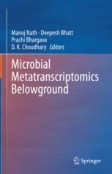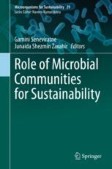Search
Search Results
-
Isolation and characterization of arsenic-binding siderophores from Rhodococcus erythropolis S43: role of heterobactin B and other heterobactin variants
AbstractRhodococcus erythropolis S43 is an arsenic-tolerant actinobacterium isolated from an arsenic contaminated soil. It has been shown to produce...

-
Biotechnological Aspects of Siderophore Biosynthesis by Actinobacteria
Actinobacteria (Actinomycetes) comprise diverse and ancient phyla of the bacteria with important properties for biotechnology. Large genomes and...
-
Physiology and comparative genomics of the haloalkalitolerant and hydrocarbonoclastic marine strain Rhodococcus ruber MSA14
Marine hydrocarbonoclastic bacteria can use polycyclic aromatic hydrocarbons as carbon and energy sources, that makes these bacteria highly...

-
Microbial siderophores as molecular shuttles for metal cations: sources, sinks and application perspectives
Iron is one of the highly abundant elements on the earth’s crust, an essential micronutrient for a majority of life forms, and exists in two frequent...

-
Plant–Actinobacteria Interactions for Biotic and Abiotic Stress Management in Crops
Environmental stresses are key constraints that reduce plant growth and development, which further leads to reduction in yield agricultural...
-
Microbial Siderophores in Sustainable Applications—Preventing and Mitigating Effects of Climate Change
Climate change is a major hazard to the environment, affecting almost every branch of human activity. The scale and dynamics of this process are...
-
Insights into the functional role of Actinomycetia in promoting plant growth and biocontrol in tea (Camellia sinensis) plants
Tea, a highly aromatic and globally consumed beverage, is derived from the aqueous infusion of dried leaves of Camellia sinensis (L.) O. Kuntze....

-
Biotechnology of Rhodococcus for the production of valuable compounds
AbstractBacteria belonging to Rhodococcus genus represent ideal candidates for microbial biotechnology applications because of their metabolic...

-
Genomic and phenotypic analysis of siderophore-producing Rhodococcus qingshengii strain S10 isolated from an arid weathered serpentine rock environment
The success of members of the genus Rhodococcus in colonizing arid rocky environments is owed in part to desiccation tolerance and an ability to...

-
Biotechnological potential of actinomycetes in the 21st century: a brief review
This brief review aims to draw attention to the biotechnological potential of actinomycetes. Their main uses as sources of antibiotics and in...

-
Molecular Mechanisms Deciphering Cross-Talk Between Quorum Sensing Genes and Major Iron Regulons in Rhizospheric Communities
Growth and development of plants are mostly attributed with beneficial rhizospheric microbial communities colonizing in their roots which can...
-
An Overview of Biomedical, Biotechnological, and Industrial Applications of Actinomycetes
Actinobacteria are the largest taxonomic group within the domain bacteria and one of the largest phyla. They are cosmopolitan organisms with the...
-
Diversity, Function, and Application of Fungal Iron Chelators (Siderophores) for Integrated Disease Management
Plants are an important source of energy, minerals, and nutrients for human beings. Several micro- and macronutrients are necessary for growth and...
-
Conjugational delivery of chromosomal integrative constructs for gene expression in the carbendazim-degrading Rhodococcus erythropolis D-1
Rhodococcus strains not only have been widely used in industries but also have a potential ability of producing new structural natural products....

-
Genome-based exploration of the specialized metabolic capacities of the genus Rhodococcus
BackgroundBacteria of the genus Rhodococcus are well known for their ability to degrade a large range of organic compounds. Some rhodococci are...

-
Direct Plant Growth-Promoting Ability of Actinobacteria in Grain Legumes
Grain legumes are important crops especially in develo** countries for their high nutrient values. In a country like India where many people are...
-
Indirect Plant Growth Promotion in Grain Legumes: Role of Actinobacteria
Grain legumes (beans, pulses, and oilseeds) are protein-rich crops and to a larger extent diversify farming systems. These crops are often confronted...
-
Siderophore production by actinobacteria
Produced by bacteria, fungi and plants, siderophores are low-molecular-weight chelating agents (200–2,000 Da) to facilitate uptake of iron (Fe). They...
-
Siderophore production by actinomycetes isolates from two soil sites in Western Australia
The actinomycetes are metabolically flexible soil micro-organisms capable of producing a range of compounds of interest, including siderophores....

-

